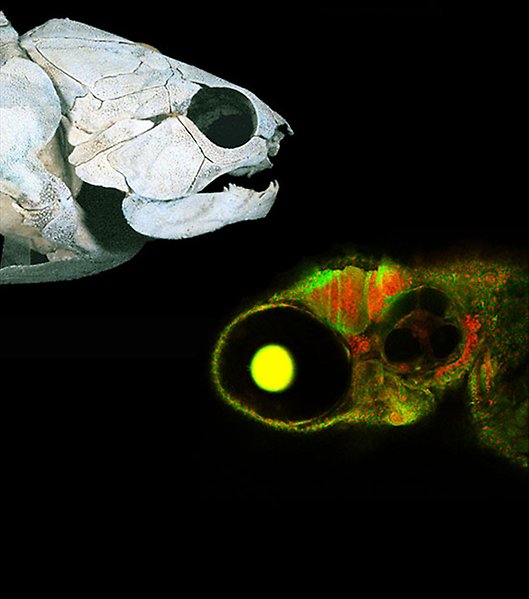Evolution and development of vertebrates

This research environment brings together researchers from a range of expertise areas - palaeontology, genomics, developmental biology and geochemistry - to investigate the early evolution of vertebrates (backboned animals) and address a series of key questions. To answer these questions we use a wide range of techniques. By comparing the genomes and developmental patterns of various living vertebrates, we can draw inferences about the likely conditions of these traits in their common ancestors.
Fossils of early vertebrates are studied using synchrotron microtomography, an extremely powerful tool that allows us to visualize their internal structures in three dimensions with resolutions of one thousandth of a millimetre or better, without harming the specimens. These very different data sets can be combined within a single analytical framework based on phylogenies (family trees) to arrive at insights that would be impossible to reach from any one data set on its own.
Researchers within the area
The members of the research environment collaborate freely across subject boundaries, with both junior and senior members explicitly encouraged to create new interdisciplinary links. We also work closely with an outstanding network of external collaborators spanning four continents.
450 million years of evolution among vertebrates
The evolution of the early vertebrates
Molecular regulation of the musculoskeletal system during development and evolution
The fish-tetrapod transition and early tetrapod radiation
Modern and extinct groups of aquatic vertebrates
